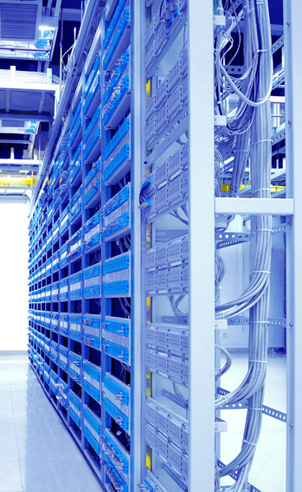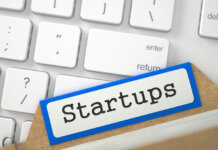Intergraph
Hardware Wars to Software Victories
In the late ’80s, Intergraph Corp. was the premiere high tech company in Alabama, even before high tech was perceived as a sector unto itself. Before I/T, there were engineers and architects, and there were the businesses that supplied them with the tools of their trade.
The ultimate tool for these designers was the Intergraph workstation for computer-aided design (CAD), well worth the hefty price tag for architects and engineers.
But the rise of the personal computer eclipsed that business plan, rapidly driving down the cost of computer hardware and increasing the power of processing chips.
Anticipating this sea change, Intergraph re-plotted its strategy, developing more affordable workstations powered for a broader market by an Intergraph-patented super chip, called the Clipper chip.
Exactly how that would have played out, we’ll never know, because a partner in Intergraph’s new plan — California-based chip manufacturer Intel Corp. — began a slowdown on orders essential to Intergraph’s production, pressuring the Alabama company to give up its Clipper chip royalty rights.
At least, that’s how Intergraph described Intel’s actions in a series of lawsuits waged in the late ’90s, charging violation of patent and antitrust laws. By that time, though, the decade had become a disaster for Intergraph. Between 1992 and 1999, the company recorded a profit in only two quarters, losing more than $460 million, its stock plummeting from $40 a share to less than $4.

|
In 2002, Intergraph finally wrestled Intel into a settlement of its suits, yielding a total of $450 million, and the money was immediately plowed into another reorganization, a transformation announced two years before.
Leaving hardware behind altogether, the company focused exclusively on software development. Products aimed at visualized solutions to the most complex systems engineering processes you can name — from running electrical grids to chemical plants to emergency management for some of the world’s largest cities.
In 2005, Intergraph was the leading software provider in industrial plant creation and shipbuilding software markets and its stock was trading at historic highs of more than $49 a share, when it was bought by one of the country’s largest private equity funds, Hellman & Friedman LLC. In 2010, Intergraph was bought by European I/T giant Hexagon, which trades on the Nordic exchange as HEXA B. The Intergraph division is still headquartered in Huntsville, still one of the largest technology companies in Alabama. The company is building a new headquarters in Cummings Research Park and plans to move in during 2014.

|
Avocent
From Software Slips to a Golden Gizmo
One of the biggest success stories to come out of Alabama in the information technology sector is Avocent Corp., a company that followed the legendary track from basement startup to global impact.
The success, however, did not come overnight. And it required a back-to-the-drawing-board corporate reinvention — a 180-degree reversal of Intergraph’s corporate trajectory, going from software to hardware.
Avocent is still located in Huntsville, where it got its start in 1981 under the name Cybex Corp.— the brainchild of a handful of engineers tinkering with a robot they thought they could sell.
The robot was a bust and yielded nothing but the company name, a compound of “cybernetic” and “excellence.”
“Two of the investors walked with the product (the robot), which never got built, ” one of the original founders, Remegius Shatas, told Business Alabama in 2000. “We were in such trouble in ’87, I said I was just going back and pay off the bank note and just go out of business. Senior people were taking no salary. Some took stock instead, for two to four years. All of us had signed our homes over.”
What was going nowhere, like the robot, was the partners’ switch to getting rich by developing software.
“They were subsisting in a support capacity, developing software that competed with a lot bigger companies, ” said David Butler, one of Cybex’s early investors and member of the board of directors. Butler said he and a brother each invested $34, 000 in the company at a time when the founders were hustling consulting work by day and trying to come up with a marketable product at night.
Following their board’s advice, the founders went back to hardware, looking for a widget that would get their heads above the competition.
 |
“There were a lot of sleepless nights, ” recalled Bob Aspery, another of the founders, speaking in 2000. It was Aspery, who died in 2006, who finally devised the key to success.
The key was a peripheral computer device that became, and still is, an essential component for networking servers. It’s still called the KVM switch, a device that allows a user to control multiple computers from one or more keyboard, video monitor and mouse. As the age of Big Data has emerged, the KVM has only grown in value, a tool for managing very complex systems, such as power grids and chemical plants.
When the Alabama Information Technology Association had its first annual meeting, in 2000, it had Shatas as its keynote speaker. And it was a momentous time for Shatas and Cybex, as well. Just weeks before, a merger was announced between the top two KVM makers in the world — Cybex and Apex Inc. Although Apex was located in the heart of Bill Gates land, in Redmond, Wash., Cybex became the lead partner in the merger, keeping the new company — called Avocent — headquartered in Huntsville. The determining victory was Cybex taking away a prize OEM contract from Apex, with Hewlett-Packard.
Following the merger, a stock transaction valued at $1.7 billion, industry analysts credited Avocent with a 50 percent share of the global KVM market.
And it was still a valuable enough piece of the pie in 2009 that Avocent fetched $1.2 billion in cash from Emerson Electric Co., when Emerson, in the depths of the Great Recession was trading at historic lows of around $30 per share, compared to its 2013 historic high of $66.50.
Chris McFadyen is the editorial director of Business Alabama.
Text by Chris McFadyen



